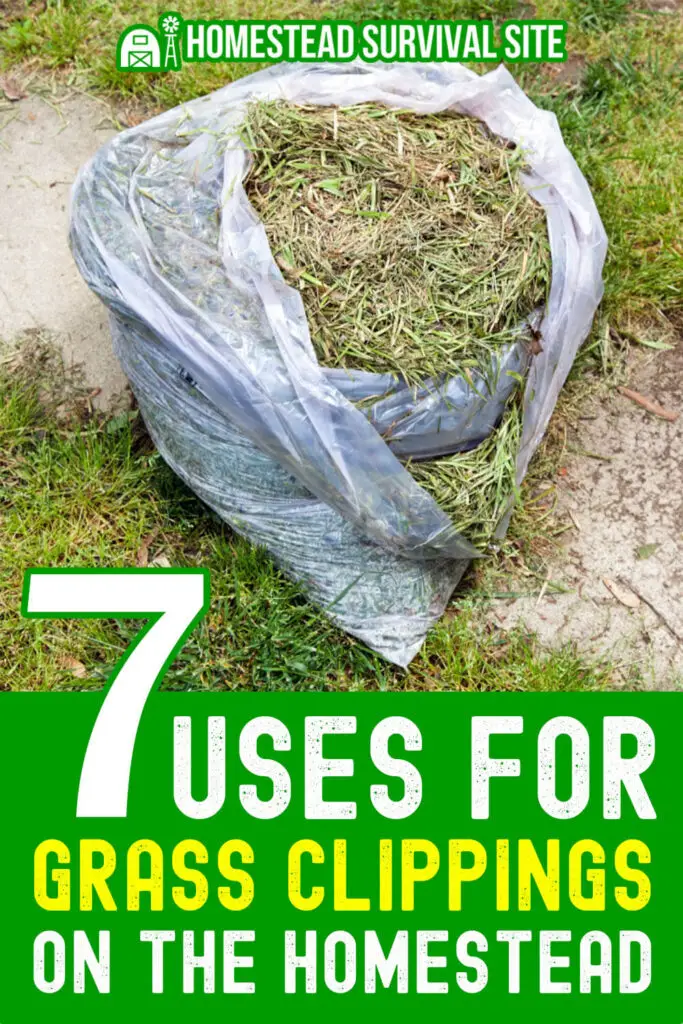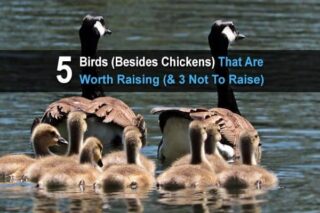Estimated reading time: 5 minutes
Whether you’re a beginner or an old hand at homesteading, chances are you’re already an expert at repurposing things. However, you may be overlooking one natural resource.
The Environmental Protection Agency estimates that Americans generate more than 35.4 million tons of yard waste each year, which amounts to over 12 percent of all municipal solid waste (MSW) in landfills. The EPA says that about half of our yard waste – roughly 17 million tons – is grass clippings.
If you spend time cutting your lawn and then bagging up the clippings for the landfill, it’s time to think again. Not only will you help conserve landfill space, but you will save time and money while providing new benefits for your property. This article shares ways you can use grass clippings on the homestead.
First, a note of caution: Don’t use clippings that have been sprayed with herbicide or other chemicals that could be harmful to plants or animals.
Want to save this post for later? Click Here to Pin It On Pinterest!
1. Leave Them On The Lawn
Leaving the trimmings where they lie can help nourish your lawn as they decompose over the course of about a week. Grass clippings provide the following benefits.
- Add nitrogen, phosphorus, and potassium to the soil
- Maintain soil temperature
- Help conserve water by acting as a layer of mulch
- Reduce weed growth
If the clippings are very thick, you can spread them out with a rake. You also can avoid this problem by mowing when the grass is dry and following a regular mowing schedule. Regular mowing reduces the need to collect clippings. Also, try to avoid cutting more than one-third of the grass height at a time.
2. Compost the Clippings
Adding grass clippings to your compost pile is another way to repurpose them. However, don’t compost them alone. To avoid foul odors from the high nitrogen content in grass, be sure to mix them with some dry brown material such as dry leaves, straw, and shredded newspaper.
3. Use Clippings as Garden Mulch
Using grass clippings as garden mulch can help your garden beds stay healthy. This method also works in raised beds and containers.
Place a one to two-inch layer of grass clippings around your plants and shrubs. The mulch will help prevent weed growth and improve moisture retention. (Note: Wait for clippings to decompose before adding another layer to prevent odors.)
4. Try Lasagna Gardening
Lasagna gardening involves creating layers of organic matter to build nutrient-rich soil. You can use grass clippings as one of the “green” layers. You’ll need green and brown matter, garden gloves, a shovel, and a hose. Here are the steps:
- Select a defined spot for the lasagna garden that gets plenty of direct sunlight.
- Alternate layers of “brown” material (dry leaves, newspaper, straw, peat moss, etc.) with “green” material (grass clippings, vegetable scraps, and other yard waste).
- Use moist materials when possible or water the materials as spread out the layers to a minimum of two feet in height.
You don’t have to build the lasagna garden all at once; you can add layers as you find material. Here’s more on building a lasagna garden. As the video points out, this method takes time, but it’s easy and worth it for the soil you create.
5. Make Organic Fertilizer
You can make your own liquid fertilizer, a sort of grass clipping tea, with your clippings. Place the clippings to fill about two-thirds of a bucket and then fill it with water. Cover with a screen to keep mosquitos out.
Let the mixture steep for about three days to two weeks, giving it a stir each day. Fair warning: the longer it steeps, the smellier it will get. Then, strain out the clippings and pour the remaining nitrogen-rich liquid around your plants, or use it in a spray bottle.
6. Use Grass Clippings as Animal Feed
Chickens love to snack on fresh, green grass. So do cows, sheep, goats, and other birds. For best results, give it to your critters soon after mowing. Rabbits and guinea pigs will enjoy dry clippings.
Veterinarians warn against giving grass clippings to horses. Here’s more information to read before giving your animals grass clippings to eat.
7. Add Them To Your Worm Bin
If you’re into composting, you may also have a worm bin. You can use dry grass clippings as bedding material. It’s best to use fresh clippings as food in moderation, as explained in this article.
FAQs About Using Grass Clippings
What about thatch?
Many people worry that grass clippings left on a lawn will cause thatch. Thatch is a layer of undigested organic matter that can build up between the soil surface and the turfgrass.
However, experts point out that grass clippings break down quickly and do not lead to thatch. Despite rumors to the contrary, clippings do not promote thatch build-up. However, you should cut your grass often enough so that no more than one-third of its length is removed at any one time.
When should you not repurpose clippings from your lawn?
As we have explained, grass clippings have many uses around the homestead. However, there are some exceptions to every rule. Don’t use them around the homestead under the following conditions:
- If clippings are from grass growing near storm drains or gutter areas.
- If the grass has evidence of rust, leaf spot, or dollar spot disease.
- If clippings are extremely wet and matted together.
- If they have been treated with chemicals.
What should I do if clippings are wet and heavy?
During periods of excessive rain or when you’ve missed a couple weeks of mowing during grass growth periods, you may need to collect the clippings. Raking can also help spread them out. You can go back to leaving them on the lawn “as is” after things dry out.
Maintaining a lawn takes time and energy, but you need not compound the problem by throwing away a valuable resource. When you repurpose grass clippings, you can improve your soil and save time and money.
Like this post? Don't Forget to Pin It On Pinterest!
You May Also Like:











